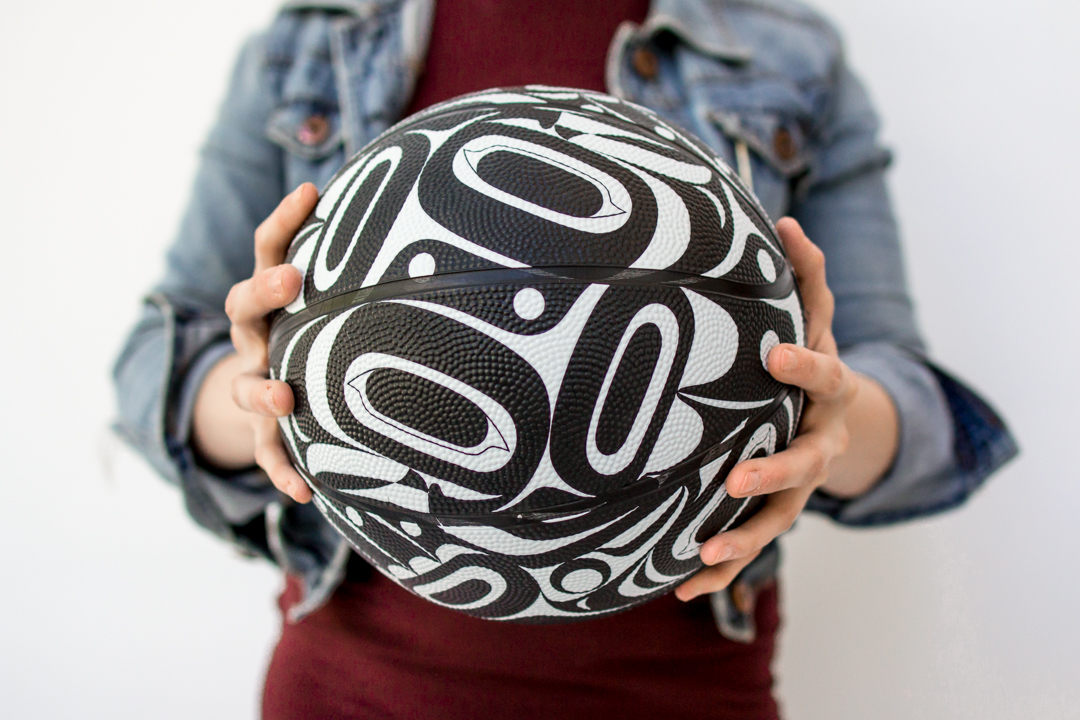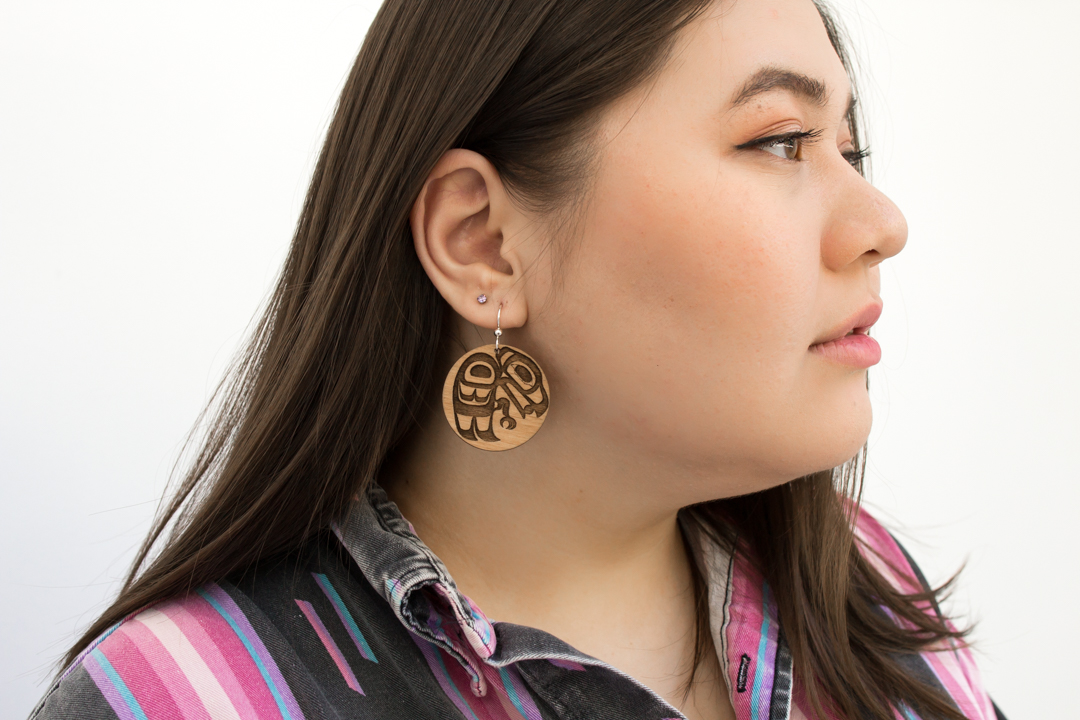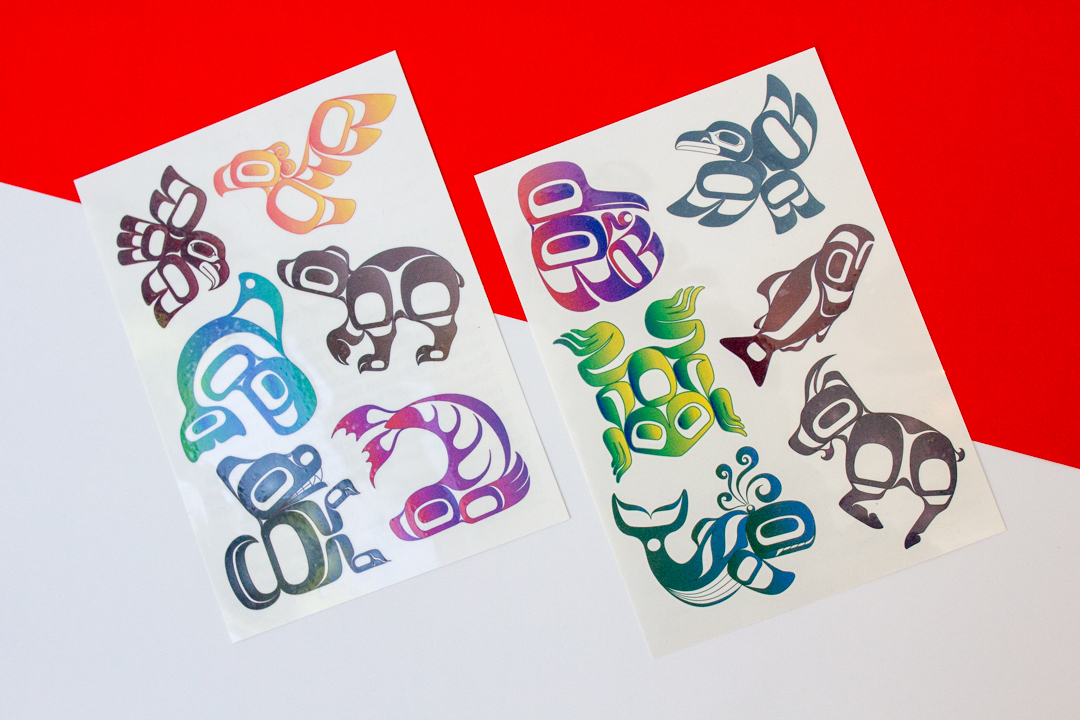Appreciation Without Appropriation: Trickster Company at SAM Shop

Did you know that SAM Shop has a store on the museum’s fourth floor with objects specifically selected based on the artwork in our special exhibitions? During Double Exposure: Edward S. Curtis, Marianne Nicolson, Tracy Rector, Will Wilson we’re working with Native artists and companies to stock the shelves. SAM Shop buyer, Renata Tatman interviewed Native artists and the co-owners of one of these retailers: Crystal and Rico Worl are siblings and they started Trickster Company with a focus on Northwest Coast art and themes and issues in Native culture. SAM recently launched a brand new web store for SAM Shop where you can order playing cards and stickers from Trickster Company. Better yet, stop by the special exhibition store on the fourth floor when you visit Double Exposure (closing September 9!) for more products by this innovative Indigenous product design company, or check out the Trickster Company site after learning more about this dynamic duo right here!
SAM: Do you remember how old you were when you first started to work on projects together?
Crystal Worl: When we were kids we used to build little towns out of Lego. There were shops filled with tiny paper books, and clothes made out of fabric. We had a very elaborate plan. Playing and making things was the way we had fun. We were given a lot of love and nurtured by family. We were encouraged to be creative. We are really blessed to have parents that believe in our art business.
Rico Worl: Crystal was always the artist. I never considered myself an artist until I returned from college. I started to work on a brand around 2010. At that time we started to think about the concept of Trickster together.

Do you collaborate on most projects, or do you each come up with your own ideas and work independently?
Crystal: It depends on the project. Sometimes I’ll say to Rico, “Hey I have this project, do you want to do it with me?” I’m often juggling up to 20 different projects. Some are collaborations with our community or other artists. We try to share opportunities with each other when they come up. Often times when I have an exhibition I invite Rico to submit work.
Rico: It’s a mix. We share a lot of the designs. Other times we help take on projects the other needs help with.
How and when were you inspired to explore a more contemporary design esthetic?
Crystal: I knew I needed to practice drawing everyday, and study formline from works done by the masters. After college I had to decided to find a mentor for an apprenticeship in carving and design. Robert Davidson came to Juneau to give a lecture about formline art. One part of his lecture he said that you need to start with 10,000 hours of practice to begin. He encouraged me to write him a letter and send in my portfolio. I am now in a two-year apprenticeship with Robert. Robert’s work inspires me to learn the principals of formline, practice 10,000 hours, develop intuition, and then expand on it.
Rico: I consider myself more a student of traditional formline design. Though I must also note that I feel that formline evolves—labeling it traditional or contemporary is not accurate. We are using contemporary mediums though and placing designs in a different context. I do this to represent my own modern identity.

How did you learn about doing business and selling your designs?
Crystal: When I showed my dad what I made, he would get really excited and tell me that it was good, and that we should try to sell it. My Mom would purchase supplies for me and give me books about art. She taught me how to bead. Both of my parents wanted me to do what I loved to do and make a living doing it.
Rico: It sounded fun. I was working at Sealaska Heritage doing anthropological work. I started to learn about commerce when people wanted to buy my artwork. I read a lot about being an entrepreneur, it became a game to me.

In the Pacific Northwest most people are familiar with formline and Native design. Do you sell to other parts of the country where they may not have seen this design work before?
Crystal: Formline is naturally pleasing to the eye. It looks good on anything and opens the door to educate people about our art and culture.
Rico: We sell around the world off our website. One of the goals of the Trickster Company is to make the art accessible and give people a chance to appreciate without appropriating. People are excited to make the connection with Native culture.